I have been asked on more than one occasion regarding converting colour images to black and white and/or monochrome. There are various ways of doing so either by Adobe Photoshop (I use CS4) using Image> Adjustments> black and white and then moving the various sliders to get what you want. For starters, I find that images that are high contrast when in colour, convert much better to black and white. One can also use various black and white filters which can be downloaded via the internet, most of which are free. A favourite filter of mine is Optikvervlabs which is also free (compatible with CS3 and above) and apparently soon to be available in Mac - well, they have been saying that for years! This filter has greatly improved over the years and gives one a high degree of variations in tone, colour (sepia etc) and contrast. There are also black and white filters for sale at Fred Miranda. Early on I used Fred's wonderful plugins and filters, especially the infrared filter which, although probably not as good as buying an infrared filter for the front of the lens, they are quite good and a lot of fun. I do have an infrared filter (er..somewhere) but it only fits my now long departed 50 f/1.8II and on the whole, it was difficult to use as it was soooooo dark and needed extraordinarily long exposures! One of my pet hates is a tripod but you really do need one to take infrared shots.
It would be difficult for me to actually post how I do the conversions as it depends on your taste (high or low contrast etc) but you can see the converted images in my black and white gallery. In all honesty, I don't recall exactly what I did on each occasion. I just keep tinkering until I get what I was looking for. Converting images to monochrome is certainly not rocket science and can be done easily with Photoshop using the filters as outlined above
Subscribe to:
Post Comments (Atom)
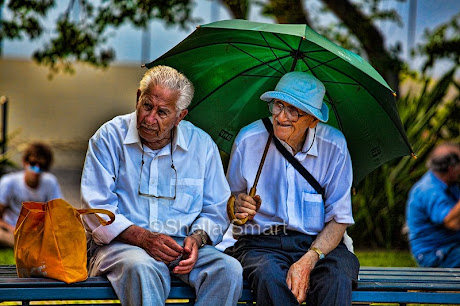
After Topaz
Using Topaz Spicify, the image has been enhanced in both colour and "pop". This may be a tad OTT but when printed out, it looks rather good (even if I say so myself!!).
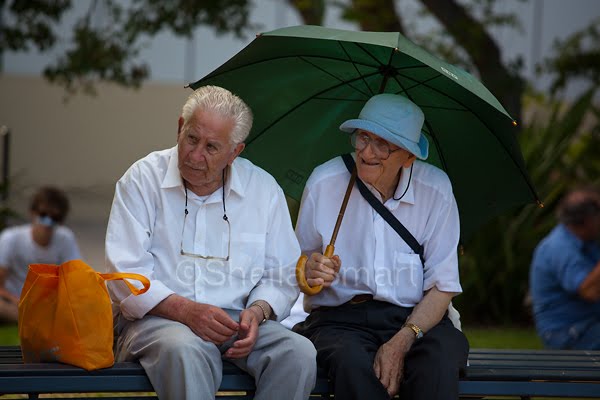
Elderly gents
Image enhancing filters
I have recently been experimenting with different filters for post processing images. Topaz has been one of them. Using the adjust filter, one can change rather dramatically an image which may (or may not) need enhancing. Purists argue that one should not enhance or change an image but in this era, we are bombarded with enhanced movies so it seems a natural progression to enhance still images. The pic directly above is the original image (shot RAW and converted using Adobe Camera RAW).
Rather boring shot of Sydney Harbour
I am going to show how a somewhat boring shot of Sydney Harbour (if there ever could be one!) can be turned into something a little more spectacular. Below is the original shot (shot in RAW format with my Canon 5D) and taken off the back of the Manly ferry.
Sydney Harbour
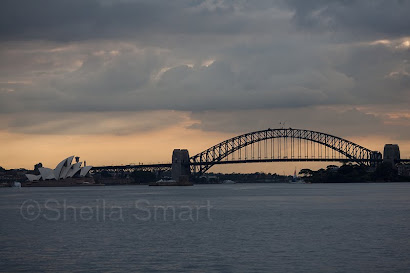
Rather boring shot of Sydney Harbour
Conversion
Using Adobe Camera Raw ("ACR"), I converted the raw image with parameters: Blacks 7, brightness +31, Contrast +61, Clarity +77, Vibrance +7, Saturation 72 and a bit of Curves which brought me to the below image.
Harbour
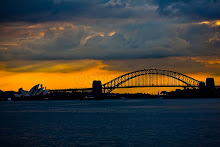
Flood filter conversion
I then produced a "reflection" using Flaming Pear flood filter. For those unfamiliar with this filter, it gives the image a perception of a reflection (poetical!) and I see it often in publications and I find myself examining ALL images with reflections to see if the photographer had used this very handy filter. I have details of the conversion if anyone is interested but to post it would be a tad boring. Flaming pair flood filters can be found here
Reflection

Sydney Harbour reflection using flood filter
I was on my lunch hour when I was strolling around The Rocks area of Sydney when I saw a group of private schoolgirls on an excursion. As soon as I saw their hats, I knew that there was a good opportunity to get a good snap. As luck would have it, they started to cross the street to where I was standing. I knew in my head the image I was looking for and I had to be above them. With an enormous amount of good fortune, a ramp up to a shop in this old area of Sydney was a few metres away. I raced up the ramp and shot this image. It was taken with my Canon 70-200 f/4L at f/5.6 which gave me a shallow depth of field leaving the centre hat in sharp focus and the rest of the hats out of focus. I submitted this image in late 2005 to the Black and White Spider Awards and it won Outstanding Achievement - People and also won me the Photographer of the Year 2005 - amateur. It really is nice to get recognition of one's work and even though I am now a professional, it still gives me a warm feeling when I look at my certificate!
This is an image on which I have added a "flood" filter. It is quite effective and quite a nice shot in any event. Flood filters can be found here and they are worth every cent. There is always a debate regarding "Photoshopping" images but as long as one is honest about the origin and digital changes to the image, I think its legimate. The original image, taken in our garden, of the cockatoo actually landing on the lawn, had a piece of its left hand side wing missing so I "replaced" it in Photoshop CS4. Cockatoos actually dislike water and when they start attacking the timber balustrades on our verandah, all I have to do is get out the spray bottle and walk towards them. They are endearing creatures, very intelligent but are enormously destructive. They are very long lived (up to 80 years) so don't even think of buying one unless you plan to outlive it and put up with the high decibels of squawking! I really hate seeing them in cages and they must long to be free when they see a large flock passing by.
Late one afternoon, I was snapping at Avalon Beach, Sydney, when a storm approached. This did not stop a late surfer. This image is available as a print via my RedBubble site. Click on image which will take you to the print site.
An abstract look at the famous icon. It is very difficult to take any pics of the Opera House as everyone and their brother has done it before. For this particular image, I used Optikvervlabs filter.
I took this shot of a leopard seal exhaling bubbles at Taronga Zoo in Sydney. This is, apparently, one of the few leopard seals in captivity. Apparently it was found injured awhile back and is happy in its huge enclosure at the Zoo along with its mate. Through a stock library, this image is to appear as a full page in a textbook.
This is one of my favourite images of Alice, an elderly aboriginal lady who sadly is now deceased. I would occasionally see her at Circular Quay in Sydney and she would often smile at me. I used a Dragan filter to bring out more texture to the image. I am often asked if I have ever been challenged when photographing candid subjects. Only on one occasion, I was asked not to take a photograph of a female street performer which was odd as that is where they often make their money. So, of course, I acceded to her wishes. Many buskers or street performers expect payment for taking their photograph and its something I always do as its their living, as taking photographs is mine. One of my most popular galleries on my website is one of Sydney Aborigines and I have many kind comments on my work. I did have one person, a Sydney academic, who actually called me a thief as she was under the erroneous impression that I was selling images of these colourful folk without payment which in fact is not true. I have model releases from many and I have made subsequent payments to them.
Mudda Mudda (aka Cedric) is an aboriginal busker who is often found at Circular Quay, in Sydney, accompanying other aboriginal buskers. He has such a great face and this image won me a UK award last year for traditional portraiture here
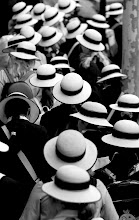
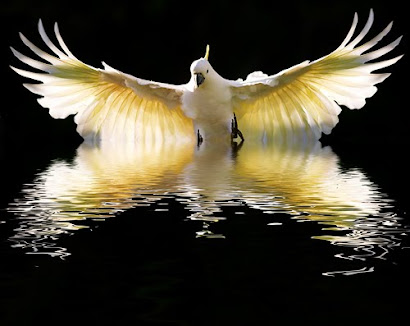
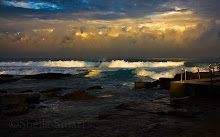
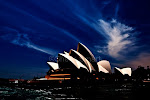

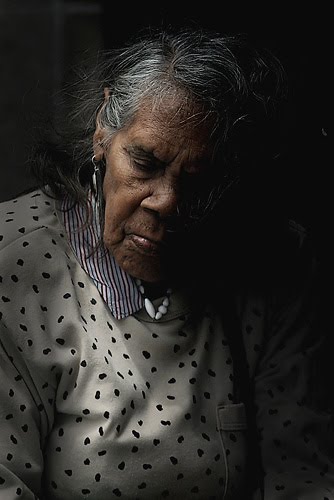
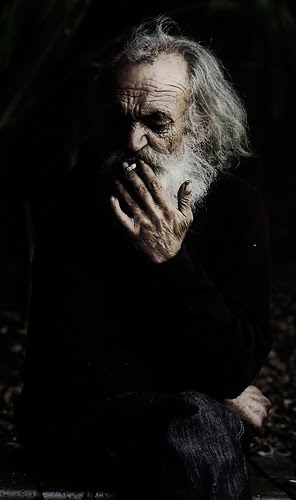

No comments:
Post a Comment